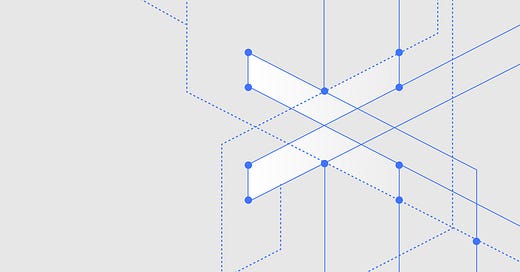Deposit networks, and their role in helping depositors access extended FDIC insurance, have been getting a lot of attention recently. Post-SVB, FDIC insurance is once again in the spotlight as depositors look for ways to keep their money safe, and extended-insurance products have seen a surge in demand. American Banker highlighted the main players in the space and was nice enough to give us a shout out for our work in recent weeks.
These products have been around for many years now and are incredibly useful for both depositors and community banks. Depositors get convenient access to increased levels of FDIC insurance, and community banks can leverage the products to retain and attract large-value clients. For smaller institutions that might otherwise lose deposits to the systemically-important banks, these products can be a real game changer.
However, the beauty and power of deposit network infrastructure, where deposits are swept or exchanged between banks, extends far beyond just insurance. For the team at ModernFi, the true power of deposit networks is their ability to help banks strategically and tactically manage their deposit base and balance sheet. Specifically, deposit networks have the potential to help banks manage their 1) balance sheet size, and 2) balance sheet composition.
Deposit networks are a tool in the ALCOs toolkit
Managing balance sheet size: Through deposit networks, banks can sweep deposits off balance sheet or bring additional deposits onboard. Sweeping deposits reduces the size of the balance sheet, while sourcing grows the bank.
Swept deposits earn yield, potentially improving a bank’s income. In addition, by reducing balance sheet size, a bank can remain below desired thresholds. Sweeping deposits off balance sheet can also improve any performance or condition metric that has bank size in the denominator such as capital ratios, return on assets, and net interest margin.
Sourcing deposits through a network helps banks improve their cash and liquidity position, and the funds can be used to support loan origination. As a result, sourcing can help both reduce risk and improve net interest margin. Importantly, sourcing deposits through a network does not require branches or large overhead costs, and results in zero deposit cannibalization, which makes it a potentially cost-effective funding source.
Managing balance sheet composition: Sourcing, sweeping, or reciprocating (exchanging) deposits through a deposit network can also improve the deposit composition of a bank. This is essentially what an FDIC-insured reciprocal program does today. Banks exchange uninsured deposits, resulting in insured deposits and thereby improving the balance sheet composition of all banks involved. However, the concept goes farther than just insured / uninsured deposits. Banks can sweep, source, or reciprocate to improve the overall composition, diversity, and stability of their deposits. For example, a bank that is highly concentrated in commercial deposits can reciprocate with a bank that is highly exposed to retail deposits, improving the diversity of each other’s deposit base.
Deposit networks can improve bank health and financial stability
Managing balance sheet size and composition through a deposit network can fundamentally improve how a bank operates. Instead of turning away new depositors when the bank doesn’t have matching loan demand or is bumping up against capital ratio thresholds, the bank can onboard the new customers, provide them with sweep accounts, and move the deposits off its balance sheet. Instead of opening a new branch, increasing yields and causing cannibalization, or turning to government institutions for funding, banks can source stable, cost-effective deposits on demand. Crucially, modern deposit networks fundamentally improve the stability of banks by serving as liquidity providers, reducing uninsured exposure, and improving deposit diversification.
The motivating goal at ModernFi is to provide the technology for banks to unlock the full power of the underlying deposit network. Banks can source deposits on demand, without picking up the phone or entering blind auctions. Banks can also sweep deposits as needed and precisely manage on- and off-balance sheet amounts. Through technology, we bring transparency and efficiency to what has historically been an opaque market. ModernFi is now rolling out real-time deposit analytics, taking advantage of core integrations, to help ALCOs understand deposit stability and composition as well as the impact of sourcing and sweeping funds (stay tuned for more on this).
Deposit networks play a vital role in helping banks and depositors with FDIC insurance, but they can do so much more. This simple idea — that a tech-forward deposit network could meaningfully help banks improve their balance sheet management — is the reason we started ModernFi.
Best,
Paolo and the ModernFi Team
Important note on FDIC insurance: When depositors receive “extended FDIC insurance” by utilizing sweep products and deposits networks, the FDIC insurance is provided by the banks that receive the deposits, not by the deposit network nor by the home institution. ModernFi is not a bank, nor does it offer bank deposits and its services are not guaranteed or insured by the FDIC; ModernFi allocates funds to banks that are FDIC members.
Current rates
Change from one week ago
Sources: FHLB Advances are an average of FHLB Boston, FHLB Chicago, and FHLB Des Moines. Brokered CDs are an average of Fidelity and Vanguard. Listed CDs provided by National CD Rateline. US Treasurys and LIBOR provided by WSJ. SOFR provided by CME.





